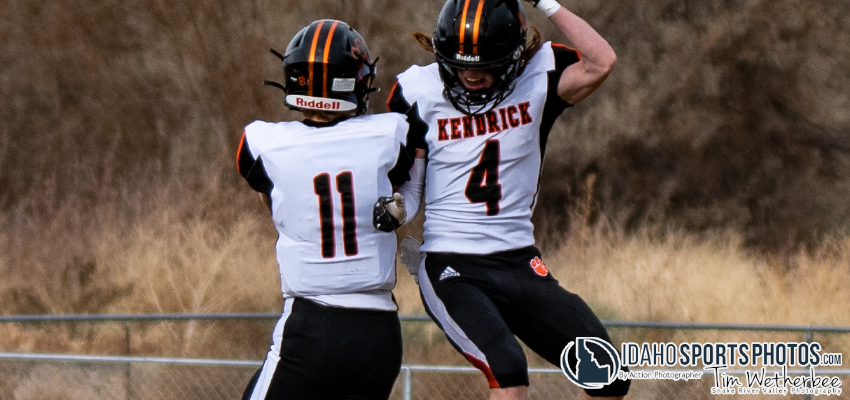|

Three years ago, Kendrick football Head Coach Zane Hobart had an idea.
His defensive coordinator, Tim Olson, had just been head coach of the junior high football team. Now, Olson would remain the high school’s defensive coordinator as well, but Hobart and Olson shared a unique thought.
Why not have the junior high run the exact same system?
“Our idea has been to run everything the exact same,” Hobart said. “That way when they get to varsity it’s the same plays, the same scheme, the same terminology to make that transition into high school varsity football a lot easier on them.”
So when the Kendrick High School football team lost its season opener to Prairie in September, an almost unbelievable streak came to a close.For the freshmen on the team, they had just suffered their first loss since third grade; nearly six years ago.
Running the exact same system at the junior high level allows for incoming freshmen to already have not just a familiarity with the high school system, which Hobart calls a typical West Coast spread offense, but a firm grasp on it.
Experience in the system for the junior high players is imperative, as Hobart’s varsity system is one that involves more detail and complicated terminology than most eight-man offensive systems.
“We run a complex system, especially in terms of eight-man,” Hobart said. “Some of the words we use, the play calls might be a little longer. So it puts us weeks ahead of where we’d normally be.”
The high school and junior high teams don’t just run the same systems, though; they practice those systems together, side by side, every night. Junior high practices from 3:30-5:30 and varsity practices from 4:30-6:30, so from 4:30-5:30 every night the two teams are practicing on the same field.
Hobart splits the field in half, with the high school taking one half and the junior high taking the other half. From there, Hobart and Olson install and practice their system, with the high school team running the fine-tuned version of it and the junior high team working out the quirks and learning the ins and outs to prepare themselves for high school varsity football.
With the junior high essentially serving as a minor league farm system for the high school, Hobart has been able to reap the benefits of players coming into the program prepared and ready to hit the ground running.
This season is the first in which all of the players from Olson’s first season with the junior high team are now on varsity, and the difference has been noticeable; Kendrick is in 1A DII state semifinals with an offense averaging over 50 points per game.
“This is the first year we got to see it firsthand and it was huge,” Hobart said. “It put us weeks ahead of where we’d have normally been if they weren’t running the same system. They’re just more comfortable; they know the routes, they know the blocking schemes.”
A huge boon for Hobart at the start of the seasons is knowing exactly what he has in the incoming freshman class because he’s been watching them practice every day for their entire junior high careers. That allows Hobart to start game-planning the positions and roles he has in mind for the kids before they even reach high school.
“We definitely look at them two, sometimes three years in advance,” Hobart said. “Just to try and put them in the most successful position you can. It does change, but for the most part, we have a pretty darn good idea of what we have in each individual athlete.”
The craziest part of the Kendrick football program? It’s not just the junior high team that practices with the high schoolers. The elementary school kids do too. Starting as low as third grade, Hobart enjoys getting to see what he’ll have six years down the road.
“For almost two months of the year, every night at practice we’ll have grades three-through-12 on the field together,” Hobart said. “It’s pretty neat … you’re planning ahead, it’s fun to see.”
|